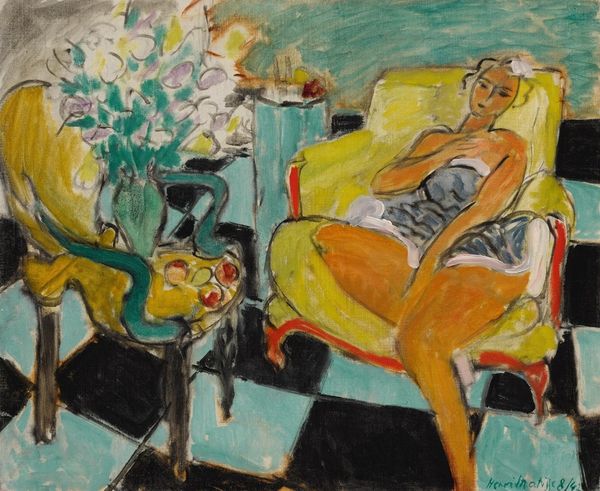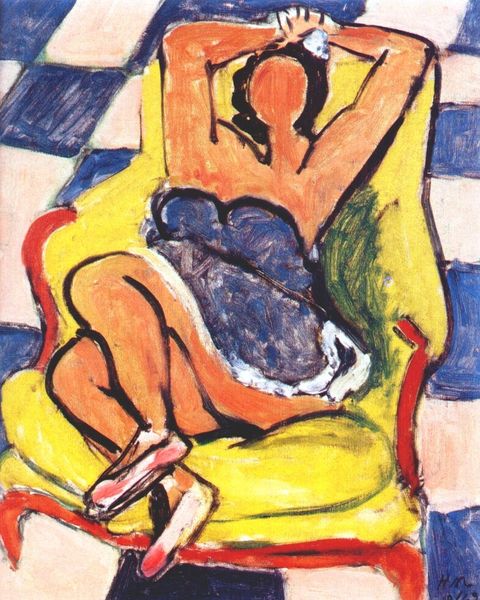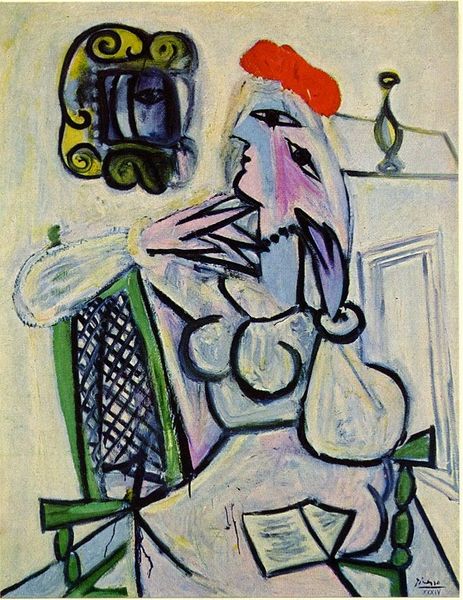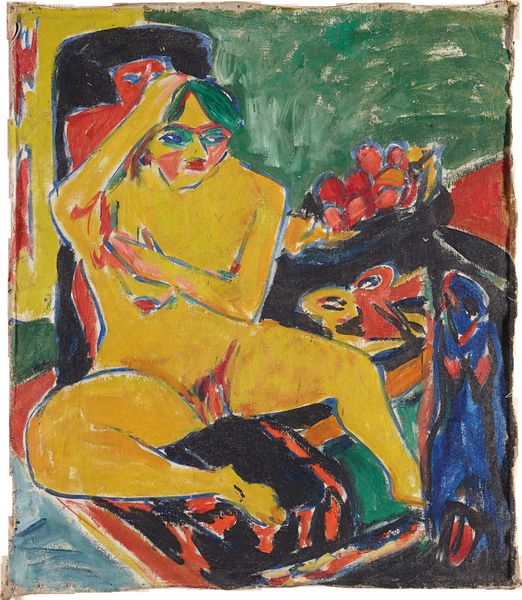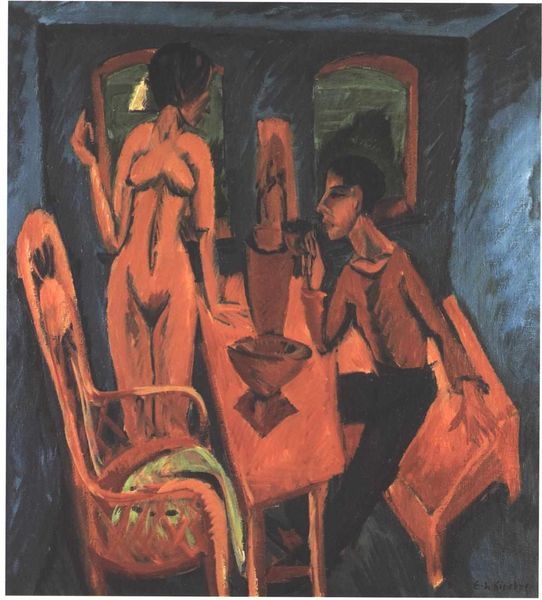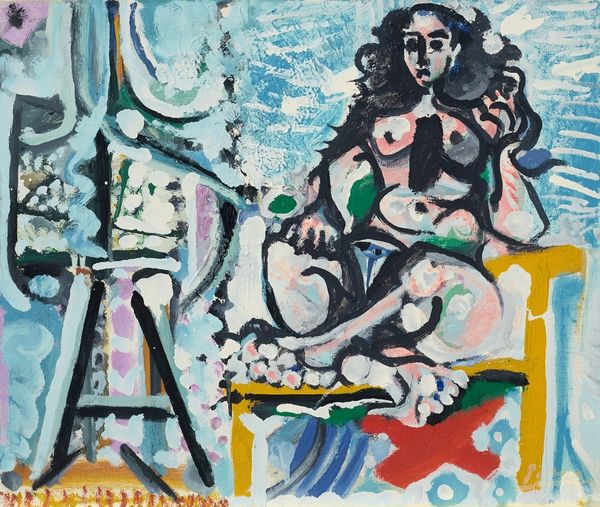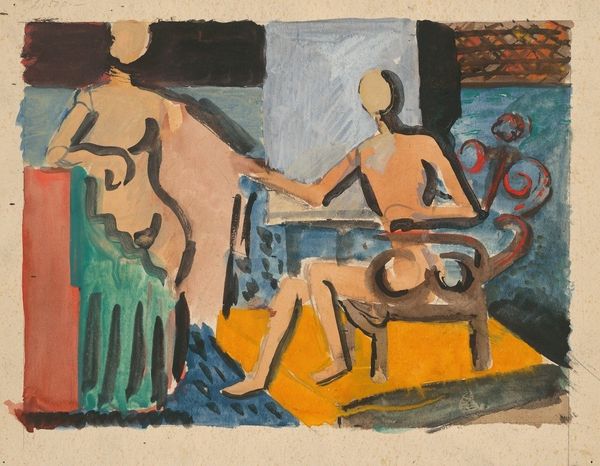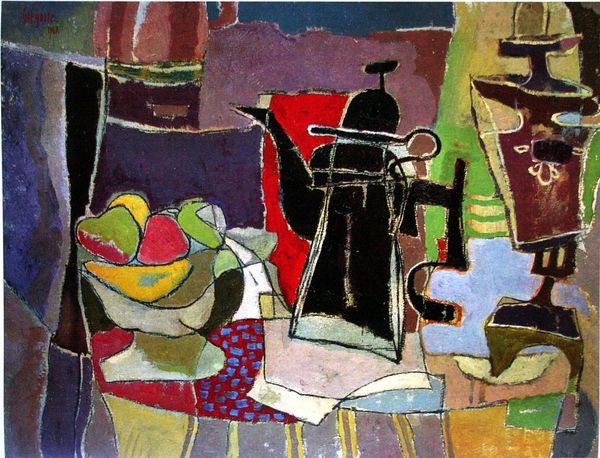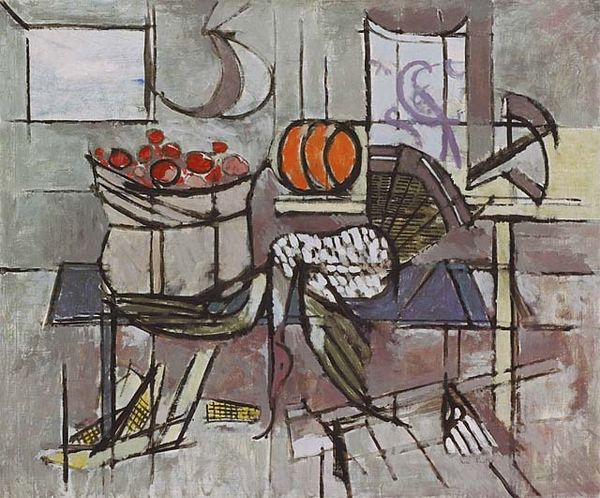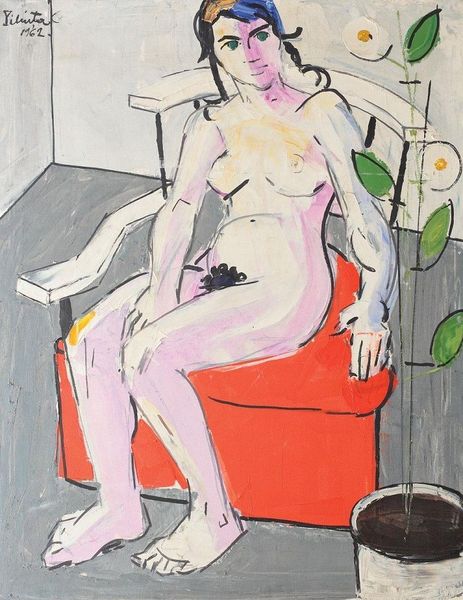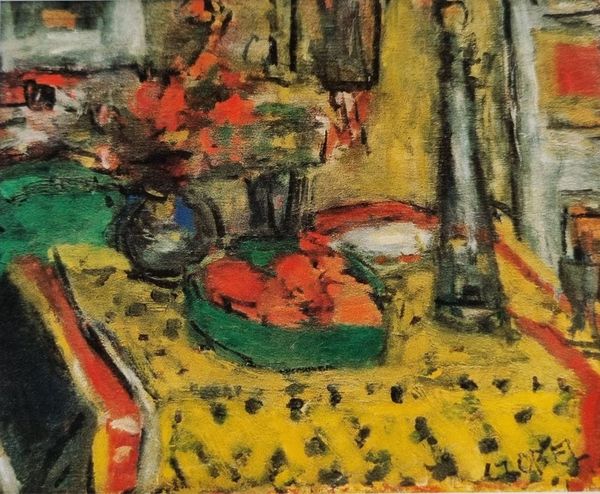
Dimensions: 50.8 x 64.8 cm
Copyright: Henri Matisse,Fair Use
Curator: Matisse's "Dancer and Rocaille Armchair on a Black Background," from 1942. The figure feels both present and absent somehow...What strikes you about it? Editor: Well, the flattening of form, the vibrant color blocking—especially that yellow chair—it's immediately striking. But it's also unsettling with its graphic qualities and the lack of depth; almost claustrophobic. I’m wondering how to even approach this from a materialist perspective. Where do we begin? Curator: Precisely! Look closer. Consider the raw materiality of the oil paint, how Matisse applies it, almost brutally, in contrast to the Rococo armchair he has presented. Think about what resources he was utilizing. Consider, also, 1942—during wartime. Could these stark color contrasts and that brutal application be understood as rationing in materials? And consider, whose labor made these materials available? Editor: That's a very different read than what I expected. It's almost as if he's challenging notions of luxury and escapism amidst scarcity and struggle, right? Showing the materials he is using or unable to find... And you’re saying even the application of the paint reflects this constraint? Curator: Absolutely! Consider that the artist would use materials differently, but these specific decisions could easily relate to what the world provided him at that exact time in space and history. Does understanding the world help interpret the art object here? Editor: It absolutely does! This tension between luxury, suggested by the rocaille armchair, and the stark reality of war, evidenced by the brutal material handling...it completely transforms the artwork's meaning. Seeing it in that historical context makes a huge difference! Curator: Exactly! By focusing on the process and conditions of its creation, we move beyond mere appreciation of aesthetics to an understanding of how the social and material world shapes artistic production. And ultimately, what the purpose of that artwork could be for the people involved. Editor: I’ll never look at a Matisse the same way again! Thanks for this incredible insight.
Comments
No comments
Be the first to comment and join the conversation on the ultimate creative platform.
